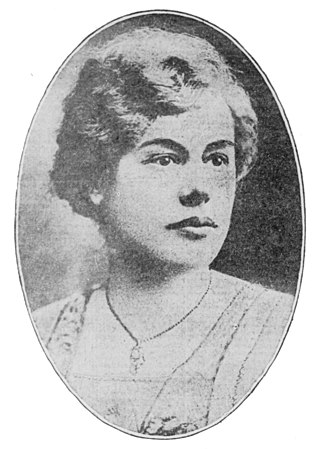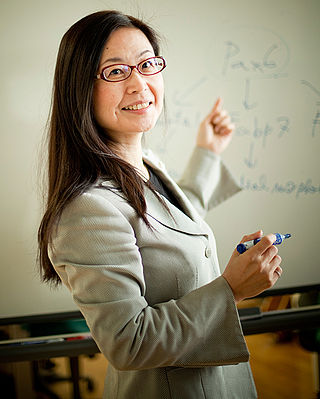Related Research Articles

Hermann Joseph Muller was an American geneticist who was awarded the 1946 Nobel Prize in Physiology or Medicine, "for the discovery that mutations can be induced by X-rays". Muller warned of long-term dangers of radioactive fallout from nuclear war and nuclear testing, which resulted in greater public scrutiny of these practices.

Mario Ramberg Capecchi is an Italian-born molecular geneticist and a co-awardee of the 2007 Nobel Prize in Physiology or Medicine for discovering a method to create mice in which a specific gene is turned off, known as knockout mice. He shared the prize with Martin Evans and Oliver Smithies. He is currently Distinguished Professor of Human Genetics and Biology at the University of Utah School of Medicine.

Laboratory rats or lab rats are strains of the rat subspecies Rattus norvegicus domestica which are bred and kept for scientific research. While less commonly used for research than laboratory mice, rats have served as an important animal model for research in psychology and biomedical science.
The National Survey of Health & Development is a Medical Research Council (MRC) longitudinal survey of people born in Britain in March 1946. It is "the longest continually running major birth cohort study in the world and is one of the longest-running studies of human development. "

In evolutionary developmental biology, Paired box (Pax) genes are a family of genes coding for tissue specific transcription factors containing an N-terminal paired domain and usually a partial, or in the case of four family members, a complete homeodomain to the C-terminus. An octapeptide as well as a Pro-Ser-Thr-rich C terminus may also be present. Pax proteins are important in early animal development for the specification of specific tissues, as well as during epimorphic limb regeneration in animals capable of such.

Paired box protein Pax-6, also known as aniridia type II protein (AN2) or oculorhombin, is a protein that in humans is encoded by the PAX6 gene.

Mary-Claire King is an American geneticist. She was the first to show that breast cancer can be inherited due to mutations in the gene she called BRCA1. She studies human genetics and is particularly interested in genetic heterogeneity and complex traits. She studies the interaction of genetics and environmental influences and their effects on human conditions such as breast and ovarian cancer, inherited deafness, schizophrenia, HIV, systemic lupus erythematosus and rheumatoid arthritis. She has been the American Cancer Society Professor of the Department of Genome Sciences and of Medical Genetics in the Department of Medicine at the University of Washington since 1995.

Helen Dean King was an American biologist. She was involved in breeding the Wistar lab rat, a strain of rats genetically homogeneous albinos intended for use in biological and medical research.

David Haussler is an American bioinformatician known for his work leading the team that assembled the first human genome sequence in the race to complete the Human Genome Project and subsequently for comparative genome analysis that deepens understanding the molecular function and evolution of the genome.

Cornelia Isabella "Cori" Bargmann is an American neurobiologist. She is known for her work on the genetic and neural circuit mechanisms of behavior using C. elegans, particularly the mechanisms of olfaction in the worm. She has been elected to the National Academy of Sciences and had been a Howard Hughes Medical Institute investigator at UCSF and then Rockefeller University from 1995 to 2016. She was the Head of Science at the Chan Zuckerberg Initiative from 2016 to 2022. In 2012 she was awarded the $1 million Kavli Prize, and in 2013 the $3 million Breakthrough Prize in Life Sciences.
Veronica van Heyningen is an English geneticist who specialises in the etiology of anophthalmia as an honorary professor at University College London (UCL). She previously served as head of medical genetics at the MRC Human Genetics Unit in Edinburgh and the president of The Genetics Society. In 2014 she became president of the Galton Institute. As of 2019 she chairs the diversity committee of the Royal Society, previously chaired by Uta Frith.
The 1970 British Cohort Study (BCS70) is a continuing, multi-disciplinary longitudinal survey monitoring the development of babies born in the UK during the week of 5–11 April 1970.

Huda Yahya Zoghbi, born Huda El-Hibri, is a Lebanese-born American geneticist, and a professor at the Departments of Molecular and Human Genetics, Neuroscience and Neurology at the Baylor College of Medicine. She is the director of the Jan and Dan Duncan Neurological Research Institute. She became the editor of the Annual Review of Neuroscience as of 2018.
Andrea Hilary Brand is the Herchel Smith Professor of Molecular Biology and a Fellow of Jesus College, Cambridge. She heads a lab investigating nervous system development at the Gurdon Institute and the Department of Physiology, Development and Neuroscience. She developed the GAL4/UAS system with Norbert Perrimon which has been described as “a fly geneticist's Swiss army knife”.

James William Bruce Douglas was a British social researcher. Douglas was responsible for the National Survey of Health & Development that in turn led to other national birth cohort studies, such as the National Child Development Study, the 1970 British Cohort Study and the Millennium Cohort Study.

Titia de Lange is the Director of the Anderson Center for Cancer Research, the Leon Hess professor and the head of Laboratory Cell Biology and Genetics at Rockefeller University.

Noriko Osumi is a Japanese neuroscientist. She was appointed as the Vice-president of Tohoku University in 2018, a Professor of Developmental Neuroscience, and the Director of the Core Center for Neuroscience at that university. Osumi also presided at the Molecular Biology Society of Japan, 2013-2014.

Jean Golding, FMedSci, is a British epidemiologist, and founder of the Avon Longitudinal Study of Parents and Children (ALSPAC), also known as "Children of the Nineties". She is Emeritus Professor of Paediatric and Perinatal Epidemiology at the University of Bristol.
Elizabeth Mary Claire Fisher is a British geneticist and Professor at University College London. Her research investigates the degeneration of motor neurons during amyotrophic lateral sclerosis and Alzheimer's disease triggered by Down syndrome.

Amy Maxmen is an American science journalist who writes about evolution, medicine, science policy and scientists. She was awarded the Victor Cohn Prize for Excellence in Medical Science Reporting for her coverage of the COVID-19 pandemic, and other awards for her reporting on Ebola and malaria.
References
- 1 2 3 4 5 Pearson, Helen (2017). The Life Project. Penguin. ISBN 9780141976617.
- 1 2 "About Helen Pearson". Helen Pearson.
- ↑ "About the Editors". Nature.com.
- ↑ Pearson, Helen (2002). "Pax6 is required to regulate the cell cycle and the rate of progression from symmetrical to asymmetrical division in mammalian cortical progenitors". Development.
- ↑ Pearson, Helen (2003). "Pax6 regulates cell adhesion during cortical development". Cerebral Cortex. 13 (6): 612–9. doi: 10.1093/cercor/13.6.612 . PMID 12764036.
- ↑ "Nature".
- ↑ "The Premier Division". Nature.com.
- ↑ "Prehistoric proteins: Raising the dead". Nature.com.
- 1 2 "The Life Project: what makes some people happy, healthy and successful – and others not?". The Guardian.
- 1 2 "Lab Girl by Hope Jahren – what a life in science is really like". The Guardian.
- 1 2 "THE LIFE PROJECT: BRITAIN'S BIRTH-COHORT STUDIES ARE THE ENVY OF THE SCIENTIFIC WORLD - BUT WILL THEY SURVIVE IN THE 21ST CENTURY?". The Independent.
- ↑ "Helen Pearson on a Unique Study of Thousands of British Lives". Edinburgh International Book Festival.
- ↑ "HELEN PEARSON ON THE LIFE PROJECT". The RSA.
- ↑ "The Life Project: the extraordinary story of 70,000 ordinary lives". YouTube.
- ↑ "Author meets her cover girl". Mid-Devon Advertiser.
- ↑ "The British Society for the History of Science" (PDF). The British Society for the History of Science.
- ↑ "Nature or Nurture?". BBC.
- ↑ Career Options for Biomedical Scientists. Cold Spring Harbour Press. 2015. ISBN 978-1-936113-72-9.
- ↑ "Lessons from the longest study on human development". TED talks.
- ↑ "Robin McKie's best science books of 2016". The Guardian.
- ↑ "Books of the Year 2016". The Economist.
- ↑ "ANNOUNCING THE 2017 ORWELL PRIZE LONGLISTS". Orwellfoundation.com.
- ↑ "Mr Brown's joys — the 2016 MJA Awards winners". Medical Journalists' Association.
- 1 2 "Children of the 90s: Coming of age". Nature. 2012.
- ↑ "Best feature Winner: Helen Pearson". Association of British Science Writers.
- 1 2 "The Study of a Lifetime" (PDF). Nature.
- ↑ "Absw Awards". Association of British Science Writers.
- 1 2 3 "ONE GENE, TWENTY YEARS" (PDF). Nature.
- ↑ "Nature Magazine Chief Features Editor Wins 2010 Wistar Institute Science Journalism Award". Newswise.
- ↑ "The lab that knows where your time really goes". Nature.
- ↑ "Prehistoric proteins: Raising the dead". Nature.com. 2012.
- ↑ "Protein engineering: The fate of fingers". Nature.
- ↑ "At-Home DNA Tests Are Here, But Doctors Aren't Celebrating". Wall Street Journal.